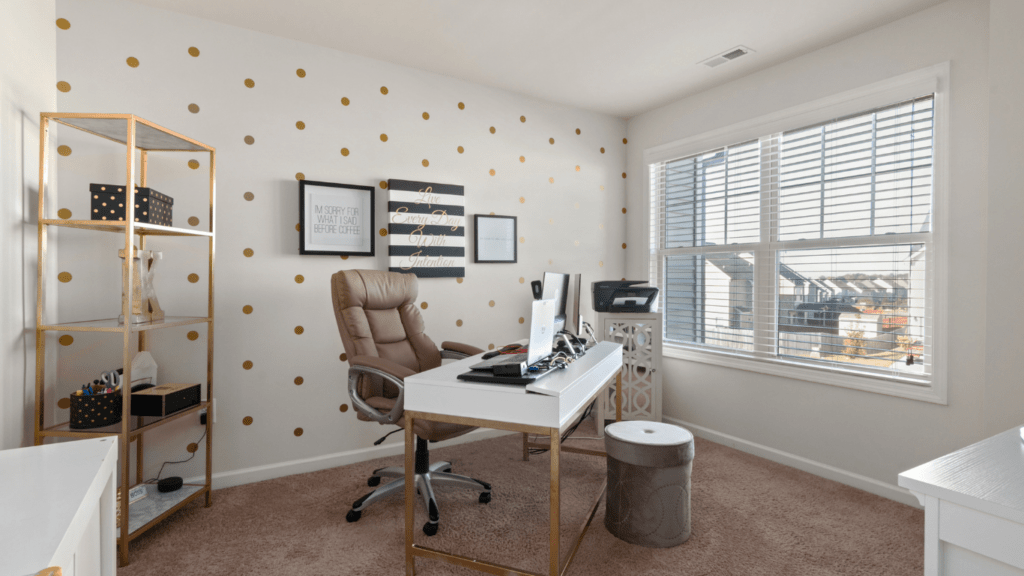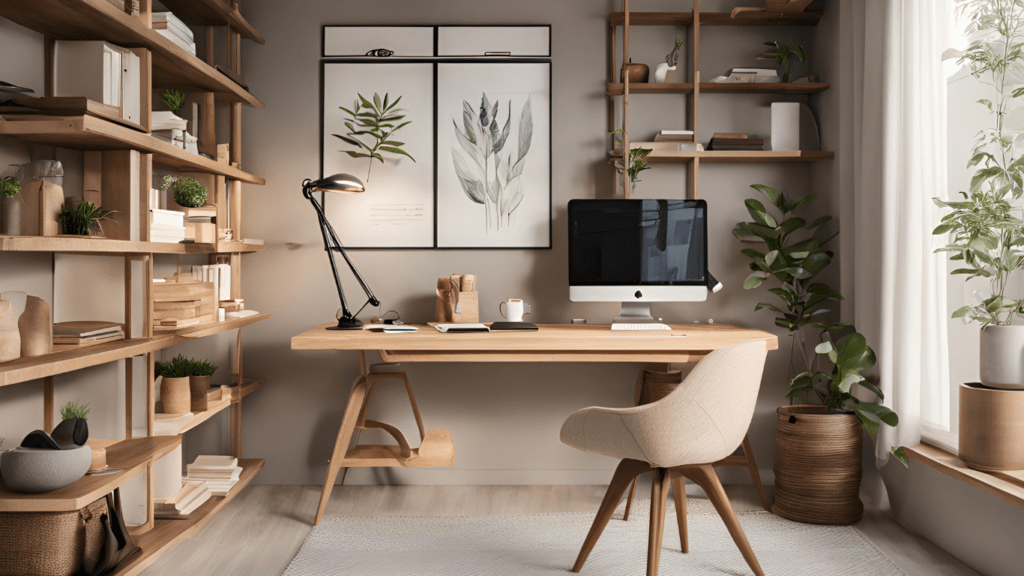The Evolution Of Home Office Design
Home office design has undergone significant changes driven by new work habits. Ergonomic furniture plays a central role, offering both health benefits and improved focus. Chairs with lumbar support and adjustable desks, for example, enhance comfort while reducing strain.
Smart technology integration elevates the modern workspace. Voice-controlled devices, wireless charging stations, and automated lighting systems create a seamless environment. These tools not only streamline daily tasks but also contribute to a productive atmosphere.
Biophilic design elements, such as incorporating plants and optimizing natural light, bring nature indoors. Greenery reduces stress, while well-lit spaces boost mood and energy levels. Multifunctional furniture solutions adapt to various needs. Convertible desks and fold-away workstations, for instance, maximize space without compromising functionality.
These evolving design trends reflect a growing emphasis on health, efficiency, and adaptability in home offices.
Key Trends In 2024
Home office design trends in 2024 prioritize health, efficiency, and adaptability. These updates cater to the varying needs of remote workers and optimize workspaces.
Ergonomic Furniture
Ergonomic furniture is pivotal for 2024. Adjustable desks and chairs, especially those with lumbar support and customizable heights, enhance comfort and reduce physical strain. This furniture choice aligns with occupational health guidelines, promoting better posture and increasing productivity.
Minimalist Aesthetics
Minimalist aesthetics also gain traction. Clean lines, neutral color palettes, and uncluttered spaces create a calming work environment. Incorporating storage solutions like hidden cabinets ensures the workspace remains free of distractions, thus boosting concentration.
Technology Integration
Technology integration continues to shape home office design. Devices like:
- smart speakers
- voice-controlled assistants
- automated lighting systems
streamline work processes. Using smart hubs to control multiple devices from a single interface becomes increasingly common, enhancing efficiency and simplifying daily workflows.
Multi-Functional Spaces
Multi-functional spaces are essential for maximizing home office utility. Convertible desks and fold-away workstations allow for seamless transitions between work and leisure. This flexibility supports dynamic work habits, making spaces more adaptable to various tasks and activities.
Sustainable Design Practices

Remote workers increasingly prioritize sustainability in home office design. Eco-friendly materials and energy-efficient solutions make workspaces more environmentally responsible.
Eco-Friendly Materials
My home office uses materials that minimize environmental impact. Bamboo and recycled wood, for example, are sustainable and durable. Low-VOC (volatile organic compound) paints and finishes improve indoor air quality. These choices reduce toxic substance exposure. Natural textiles like organic cotton and hemp are also popular for curtains and upholstery.
Energy Efficiency
I focus on reducing energy consumption in my office. LED lighting, which uses at least 75% less energy than incandescent bulbs (source: U.S. Department of Energy), is an effective choice. Motion-sensor lights and smart thermostats help manage energy use based on room occupancy. Solar panels also provide renewable energy, contributing to a greener workspace. Energy-star-rated appliances ensure efficient electricity use.
These sustainable design practices enhance the functionality and environmental responsibility of home offices.
Personalization And Comfort
Home office design trends in 2024 emphasize creating personalized and comfortable workspaces to accommodate individual needs and preferences.
Customizable Workstations
- Customizable workstations offer remote workers flexibility and adaptability.
- Height-adjustable desks allow users to switch between sitting and standing, enhancing comfort and reducing strain.
- Modular storage solutions, like stackable drawers and adjustable shelving, provide tailored organization systems to keep essentials within reach and maintain clutter-free workspaces.
- By incorporating features like built-in cable management and ergonomic accessories, such as monitor stands and keyboard trays, customizable workstations cater to diverse ergonomic requirements and aesthetic preferences.
Biophilic Design
Biophilic design integrates natural elements to create a calming, inspiring work environment. Incorporating plants into home offices improves air quality and enhances well-being. Natural light, achieved with large windows or skylights, reduces eye strain and boosts mood. Using materials like wood, stone, and natural fibers in furniture and decor fosters a connection to nature, promoting relaxation and creativity. By blending indoor and outdoor elements, biophilic design enhances both productivity and comfort in home office spaces.
Future Predictions
As we look at the future of home office design, significant advancements and shifts promise to redefine remote workspaces in 2024.
Smart Home Integration
Smart home integration will play a pivotal role in home office design trends. Smart lighting, such as Philips Hue and LIFX, will allow users to customize their work environment with voice commands or mobile apps. Voice-activated assistants, including Amazon’s Alexa and Google Assistant, will streamline tasks like scheduling and controlling connected devices. Automated climate control systems, like Nest Thermostats, will maintain optimal working temperatures, enhancing comfort and productivity. Integrated home security solutions, like Ring and Arlo, will ensure remote workers feel secure in their spaces.
Wellness-Centric Designs
Wellness-centric designs will prioritize physical and mental health in home office environments. Sit-stand desks will become more prevalent, promoting movement and reducing the risks of prolonged sitting. Ergonomic chairs with lumbar support will continue being a staple, enhancing comfort and reducing strain. Incorporating natural elements, such as plants and water features, will reduce stress and improve mood. Soundproofing solutions, including acoustic panels and noise-canceling devices, will create tranquil workspaces, especially for those in busy households. Adjustable lighting options will cater to different task requirements, ensuring workers have the right illumination for various activities.



 Wesleyero McGill – Founder & CEO
Wesleyero McGill is the visionary behind Castle Shelf House, bringing over a decade of experience in home renovation and design. His passion for creating beautiful, functional spaces has led him to establish this platform, where he shares the latest trends in interior and exterior design. As Founder and CEO, Wesleyero is dedicated to offering expert advice on furniture placement, home styling, and renovation, helping homeowners transform their spaces with ease and confidence.
Wesleyero McGill – Founder & CEO
Wesleyero McGill is the visionary behind Castle Shelf House, bringing over a decade of experience in home renovation and design. His passion for creating beautiful, functional spaces has led him to establish this platform, where he shares the latest trends in interior and exterior design. As Founder and CEO, Wesleyero is dedicated to offering expert advice on furniture placement, home styling, and renovation, helping homeowners transform their spaces with ease and confidence.
